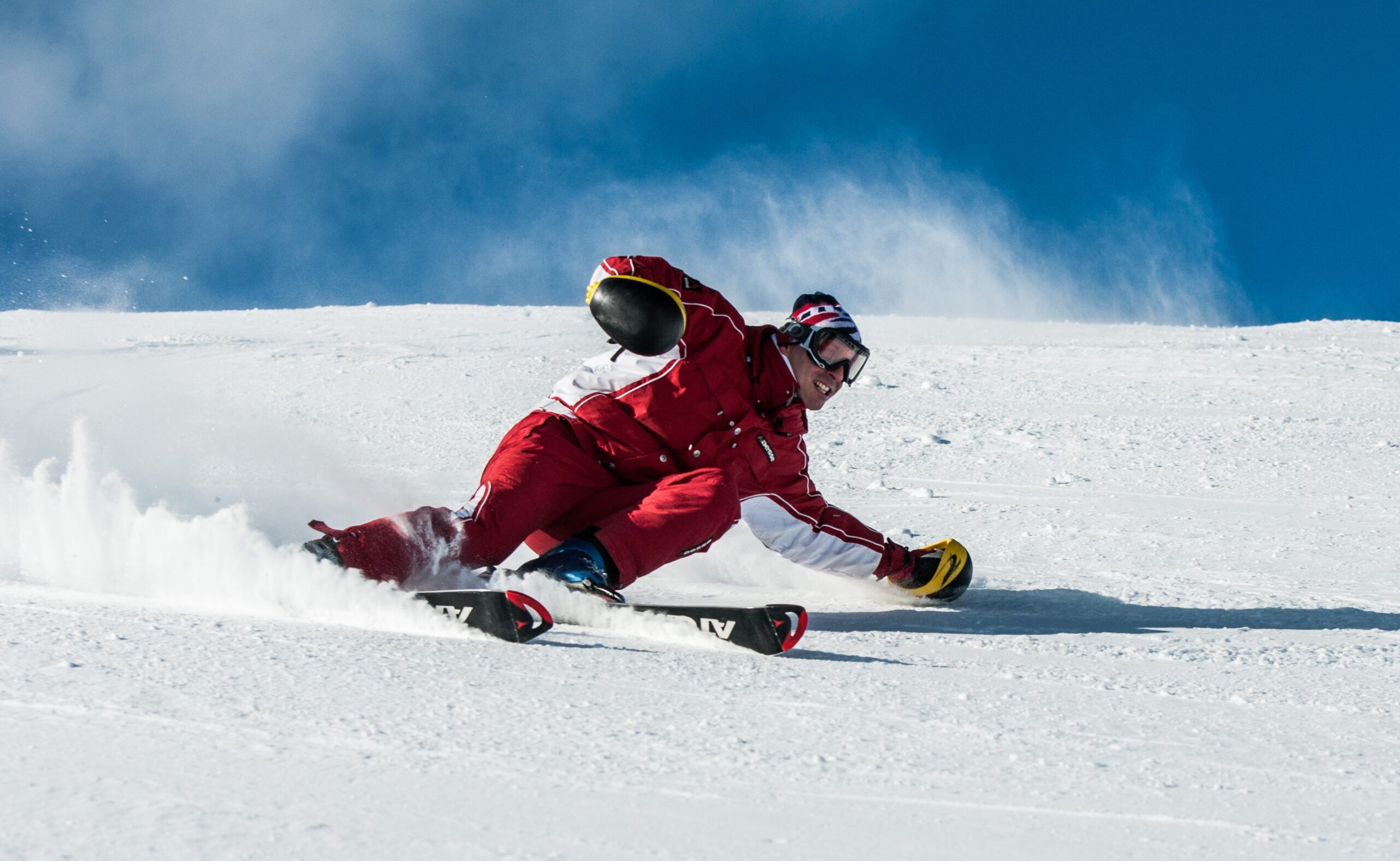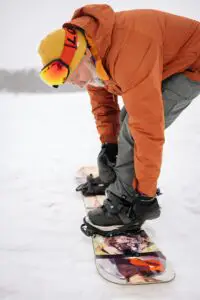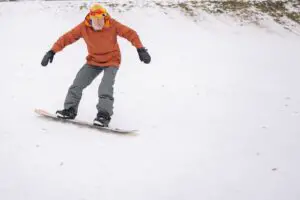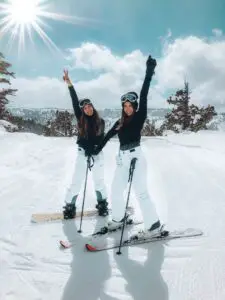Are you ready to take your snowboarding skills to the next level? Have you ever wondered if those tricks and techniques could translate to skiing? Well, wonder no more!
In this article, we will explore the exciting world of snowboarding and skiing and discover the similarities and differences between these two exhilarating winter sports.
Whether you’re a seasoned rider or just starting out, get ready to dive into the world of skiing and see how your snowboarding skills can help you conquer new slopes with ease.
Key Takeaways
- Snowboarding skills can easily translate to skiing.
- Familiarity with balancing on a board and reading terrain gives a head start in mastering skiing techniques.
- Carving turns and controlling speed are fundamental skills in both sports.
- Transition may require adjustments, but existing knowledge of mountain dynamics accelerates progress.
The Similarities Between Snowboarding and Skiing
You’ll notice that snowboarding and skiing have a lot of similarities. Both sports involve gliding down snowy slopes, experiencing the thrill of speed and carving turns in the snow. Whether you choose to strap on a board or slide down the mountain on skis, the feeling of freedom and exhilaration is unparalleled.
The techniques used in both activities require balance, coordination, and core strength. From navigating through moguls to performing jumps and tricks in terrain parks, there is no shortage of excitement in either sport.
Whether you’re drawn to the elegant precision of skiing or the dynamic movements of snowboarding, both offer a sense of belonging to a community united by their love for winter sports. So grab your gear and hit the mountain – you’ll find your place among fellow enthusiasts who share your passion for sliding through the snow!
The Differences in Techniques: Snowboarding Vs. Skiing
When it comes to technique variations, snowboarding and skiing offer distinct experiences.
As a passionate rider, you’ll appreciate the contrasting approaches in balance and body control between the two sports.
While skiing requires a more symmetrical positioning of your body, snowboarding demands a greater emphasis on core strength and flexibility.
Additionally, turning and maneuvering techniques differ significantly; skiers rely on leg movements while snowboarders engage their entire body to execute smooth turns and stylish tricks.
Technique Variations: Snowboarding Vs. Skiing
There’s a noticeable difference in technique between snowboarding and skiing. When it comes to snowboarding, you’ll find that your feet are strapped onto a single board, allowing for quick turns and smooth transitions. Skiing, on the other hand, involves having both feet attached to separate skis, providing more stability and maneuverability.
Here are three key differences in technique between the two winter sports:
- Weight distribution: In snowboarding, you shift your weight from heel to toe to control your speed and direction. In skiing, you distribute your weight evenly across both skis for better balance.
- Turning: Snowboarders rely on their edges to carve turns while skiers use their poles as leverage to initiate turns.
- Body positioning: Snowboarders face sideways down the slope with their body aligned perpendicular to the board. Skiers face forward with their body parallel to the skis.
Understanding these variations will not only enhance your skills but also foster a sense of belonging within each respective community.
Balance and Body Control
Snowboarders, listen up!
Shifting your weight from heel to toe is key for achieving exceptional balance and control on the slopes. As you carve through the powder, this simple yet crucial technique allows you to navigate with finesse and grace.
By transferring your weight onto your toes, you engage the front edge of your board, initiating precise turns and maintaining stability. Conversely, shifting back onto your heels ensures a smooth transition between turns while keeping you in control.
Mastering this weight shift not only enhances your overall riding experience but also boosts confidence as you conquer challenging terrains.
Turning and Maneuvering Techniques
Shifting your weight from heel to toe is essential for executing smooth turns and precise maneuvers on the slopes. By mastering this technique, you will unlock a world of possibilities on your snowboarding journey.
To enhance your skills further, consider these important tips:
- Engage your core: A strong core provides stability and control while turning. Focus on engaging your abdominal muscles to maintain balance throughout each maneuver.
- Bend your knees: Flexing your knees allows for better absorption of bumps and uneven terrain, ensuring a smoother ride. It also helps with initiating turns and maintaining proper balance.
- Look where you want to go: Keep your eyes focused in the direction you want to turn. This will help guide your body and maintain proper alignment, resulting in more controlled and precise maneuvers.
By incorporating these techniques into your snowboarding repertoire, you’ll feel confident as you navigate the slopes with ease.
Embrace the sense of belonging that comes from being part of this exhilarating winter sport community!
Learning Curve: How Snowboarding Skills Can Help in Skiing
If you’re already comfortable with snowboarding, your skills can easily translate to skiing and help you navigate the slopes with ease. The learning curve from snowboarding to skiing is not as steep as starting from scratch. Your familiarity with balancing on a board and reading the terrain will give you a head start in mastering skiing techniques.
As an experienced rider, you already possess the ability to carve turns and control your speed. These skills are fundamental in both snowboarding and skiing. Your body awareness, balance, and edge control will transfer seamlessly to skiing, allowing you to confidently tackle any slope.
The transition may require some adjustments due to the different equipment and stance, but your existing knowledge of mountain dynamics will accelerate your progress. Embrace this opportunity for growth by expanding your winter sports repertoire. With your snowboarding foundation, you’ll quickly find yourself belonging among skiers on the mountainside.
Adapting to New Equipment: Transitioning From Snowboarding to Skiing
When it comes to transitioning from snowboarding to skiing, there are several key points to consider.
Firstly, you’ll be pleased to know that there are many similarities between the techniques used in both sports. From maintaining balance and body positioning to executing turns and controlling speed, your experience as a snowboarder will definitely give you a head start on the slopes.
However, it’s important to acknowledge the challenges that come with equipment transition – getting used to the different gear and adjusting your muscle memory can take some time and practice.
But don’t worry, with dedication and a passion for both sports, you’ll soon find yourself mastering the art of skiing as well.
Similarities Between Techniques
There’s a lot of overlap between snowboarding and skiing techniques. When it comes to carving turns, both sports require similar movements and weight shifts.
Here are three key similarities that will help you understand the connection between snowboarding and skiing:
- Edging: Whether you’re riding on a board or skis, the technique of edging is essential for controlling your speed and direction. By angling your edges into the snow, you can create resistance and maintain stability.
- Body Positioning: Both snowboarding and skiing require proper body positioning for balance and control. Keeping your knees bent, hips centered, and upper body facing downhill allows for smooth turns with maximum control.
- Terrain Adaptation: Regardless of whether you’re on one board or two skis, adapting to different types of terrain is crucial. From moguls to powder, understanding how to adjust your technique will ensure a seamless transition from one sport to the other.
By recognizing these shared techniques, you’ll feel more confident in your ability to excel in both snowboarding and skiing. Embrace the overlapping skills as they provide a sense of belonging within the winter sports community.
Keep pushing yourself and remember that learning never stops on the mountain!
Balance and Body Positioning
To maintain balance and control while on the slopes, it is important to remember a few key principles. First, keep your knees bent, hips centered, and upper body facing downhill. This applies to both snowboarding and skiing. By maintaining this proper body positioning, you will be able to navigate through various terrain with ease and confidence.
Bending your knees is crucial as it allows for better shock absorption and stability. It also helps in initiating turns and absorbing bumps along the way. Keeping your hips centered ensures that your weight distribution is balanced between both legs, enabling you to make precise movements and maintain control.
Facing your upper body downhill helps in maintaining proper alignment with the direction of travel. This allows for better weight transfer during turns and provides optimal stability.
Challenges of Equipment Transition
Transitioning between skiing and snowboarding can present challenges due to differences in equipment. As someone who is passionate about both sports, I understand the desire to explore different ways of enjoying the slopes. However, it’s important to be aware of the unique challenges that come with transitioning between these two disciplines.





